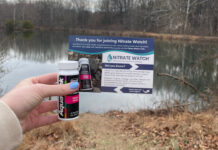Reporter: Tim Kenyon
CEDAR RAPIDS – Mixed use is an often-used phrase in development, but in architectural practice can be the backbone to a successful business area.
It’s an approach targeted in and near downtown Cedar Rapids as business and government leaders continue reinvestment and recovery projects following the June 2008 flood and recent prolonged economic recession.
Rod Scott, a historic preservation consultant, recently said more than 30 projects in downtown and nearby in the New Bohemia and Czech Village areas could net up to $40 million in state and federal historical tax credits.
Mr. Scott said the purpose and use of those buildings are diverse. They include sites owned by Guaranty Bank (the bank building and the next-door World Building), Armstrong Development; Acme Graphics at 201 Third Ave. SW; the former Village Bank and Trust, 860 Second Ave. SE; and the Red Baron Bar and Dance Club, 62 16th Ave. SW.
“That’s an incredible amount of economic development when you turn it around and see how businesses can use that to stay open,” Mr. Scott said recently.
Robert Becker, president of Guaranty Bank, said he is strong proponent of keeping aged structures in good shape for good business.
“I like the idea to keep an old building viable,” said Mr. Becker, whose bank’s building is 115 years old.
Downtown District President and CEO Doug Neumann said a blend of old and new will result in a successful change for the area that increases the tax base and workforce.
“I’m very appreciative of the efforts of the Historic Preservation Commission, Rod Scott and others. What their efforts are helping to save are important pieces of the fabric of downtown, and they also leverage economic opportunities,” Mr. Neumann said. “Ultimately, we’re trying to develop a downtown that is the economic, cultural and social center of the region. That involves aspects of historic preservation and architectural excellence, as well as new construction and infill development that are part of our flood recovery and long-term economic redevelopment strategy.”
New projects in the surrounding area include ongoing construction of the new federal courthouse on the Cedar River’s east edge and Eighth Avenue SE, the human services campus a few blocks east, the rebuilding of the Paramount Theatre at 123 Third Ave. SE, and the $67 million events center project that includes updating the U.S. Cellular Center and adding an adjacent meeting and exhibition hall on First Avenue next door to the Crowne Plaza Five Seasons Hotel and Ballroom.
The former Siegel’s building at First Street and Third Avenue SE is targeted for demolition in June. It will initially be used as surface parking until a long-term plan is determined. The Downtown District bought the site in January and announced demolition plans for the blighted property as a priority in 2010.
At the recent Cedar Rapids Downtown Business Summit, John Gronen of Dubuque provided several examples of how saving and redeveloping historic buildings paid off in his river city, said Scott Olson, a Skogman commercial real estate agent and architect.
“We have to be cognizant to make every effort to save historic buildings and reinvent them like they did,” Mr. Olson said.
Financial incentives for redeveloping existing buildings, whether through tax credits or otherwise, can prove fruitful just as with new structures, he said.
Cedar Rapids developers need to recruit tenants for redevelopment as Mr. Gronen did in Dubuque and others have done in Kansas City, Minneapolis and Des Moines, Mr. Olson said.
“They’re fun neighborhoods to live in and to do business,” he said regarding downtown mixed uses.
Architect and developer Steve Emerson said good historic esthetics tend to help a downtown more overall than it does a specific project or business.
“That’s going to help the architectural character remain more true in the area,” said Mr. Emerson. “It helps to set the tone and you don’t have to worry so much about what the neighbors are doing because interior-based redevelopment doesn’t change the exterior’s appeal.”
Mr. Emerson said he is considering three proposals for tenants on the four lower floors of his latest redevelopment project – the Town Centre complex in the 200 block of Third Avenue SE. The nearly 100,000 square feet of space will be finished according to the needs of the selected prospects, he said. That pick will be decided within a few weeks, Mr. Emerson said.
Dan Thies said his staff at the downtown Cedar Rapids-based OPN Architects remains mindful of surroundings on projects in its backyard.
“I think we’ve always tried to look at our work on a site to be contextual and site sensitive,” Mr. Thies said.
The firm’s projects include the new Human Services Campus building, the federal courthouse, Paramount Theatre and public library planned at the present home of TrueNorth Companies, 421 Fourth St. SE.
“Our work recognizes existing structures play a critical role in design evaluation of an idea or different design concept,” he said. “We try to be responsible and ultimately provide the highest and best value for the investment someone’s making in that project regardless of whether it’s new or a renovation.”
Long-lasting appeal is the target, he added.
“The value of design is to make it as timeless as possible. That garners a number of different definitions that require artful and skillful use of materials that don’t date themselves,” Mr. Thies said.
Appropriate use of brick, for instance, can be used in traditional and modern ways with the key aspect to use a quality level of the material for the investment needed.
On hold
The Wells Fargo drive-through bank reopened in December 2008, but operations remain closed inside the adjacent Louis Sullivan Building at 101 Third Ave. SW.
Mark Long, president of Cedar Rapids Wells Fargo branches, said his company won’t decide the historic Sullivan Building’s fate until plans are more certain regarding flood protection on the river’s west side.
City officials continue to seek federal approval of plans for flood prevention on both sides despite recent indications that only the east portion will be protected, recommending the west to be greenway or spill over.
One option could be to relocate the Sullivan Building part of the structure bank, Mr. Long said.
“The historic piece is going to be preserved in one shape or way or another,” he said.




